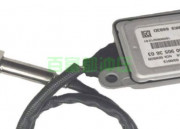The application range of metal stamping parts and the concept of stamping die
1. Application scope of metal stamping parts
Common application fields of metal stamping parts are:
1. Stamping in the automotive industry.
Mainly draw. In my country, this part is mainly concentrated in large factories such as automobile factories, tractor factories, and aircraft factories. There are few independent large-scale stamping and drawing factories. 2. Stamping of auto parts and other industries.
Mainly punching and shearing. Many companies in this sector are classified as standard parts factories, and there are also some independent stamping factories. At present, there are many such small factories near some automobile factories or tractor factories.
3. Electric device stamping factory. This type of factory is a new industry, developed with the development of electrical appliances, and the factories in this sector are mainly concentrated in the south.
4. Stamping factory for daily necessities. Making some handicrafts, tableware, etc., these factories have also developed greatly in recent years.
5. Home appliance parts stamping factory. These factories only appeared after the development of household appliances in my country, and most of them are distributed in household appliance enterprises.
6. Special stamping enterprises. For example, the stamping of aviation parts belongs to this type of enterprises, but these process factories are also classified as some large factories.
Second, what is stamping processing
Stamping is an advanced metal processing method. It is based on the plastic deformation of metal. Under normal temperature conditions, the die and stamping equipment are used to apply pressure to the sheet, so that the sheet is plastically deformed or separated, so as to obtain a Parts of a certain shape, size, and performance.
Three, the concept of stamping die
Stamping dies, also known as stamping dies, metal dies, and metal stamping dies, have almost the same meaning. It refers to the pressure processing method that uses a die fixed on a punch or a press to apply a certain pressure to a metal or non-metallic sheet to separate or form the material, thereby obtaining parts with certain size requirements and qualified appearance quality. There are many kinds of molds, and I mainly focus on the metal stamping molds that I am familiar with.
The products processed by the mold are basically the same in size and appearance, and there is no big difference. Because of the rapid prototyping, high production efficiency, stable product quality, high precision, high material utilization, simple operation and low labor intensity, the The technical requirements of the operators are not high. The average person only needs to come in and follow others to learn the operation for a day or two, and they will be able to get started very quickly. If you are a production line host, you must learn to operate punches, feeders, levelers, and mold removal. These are all very simple tasks, and you need to be strong and willing to bear hardships and stand hard work.
Read More →





















